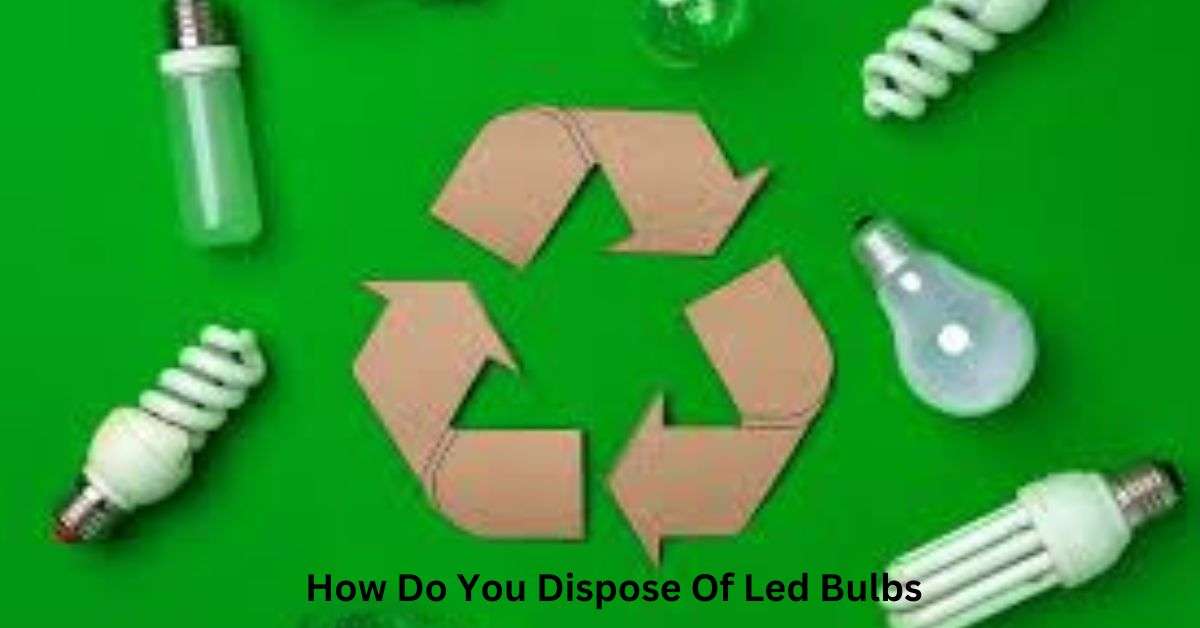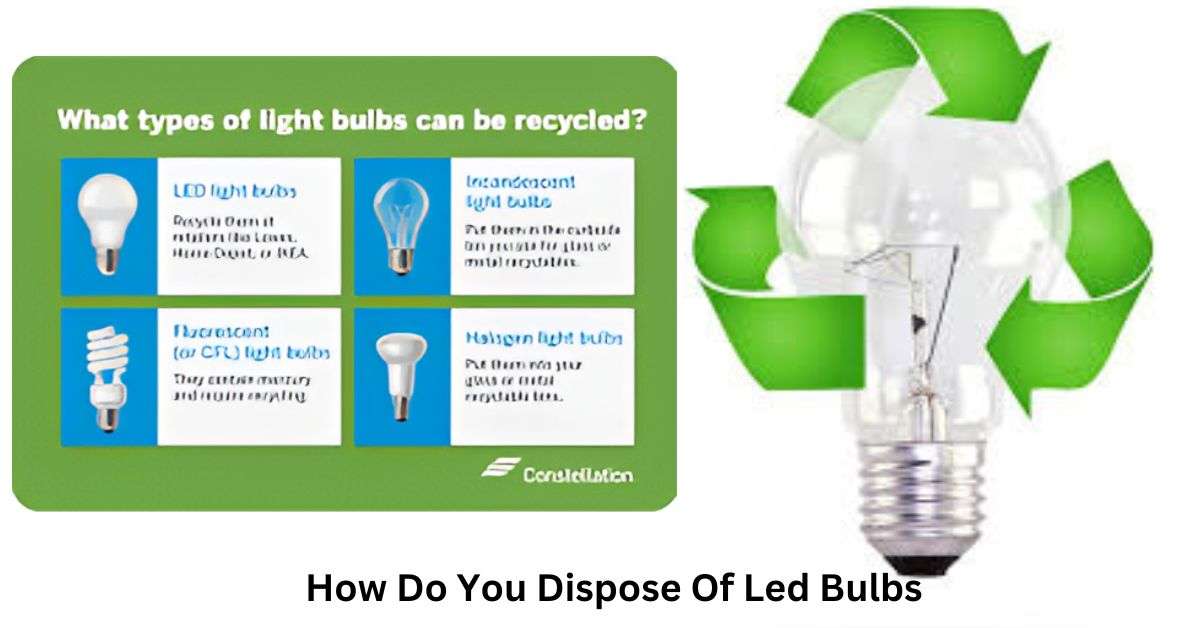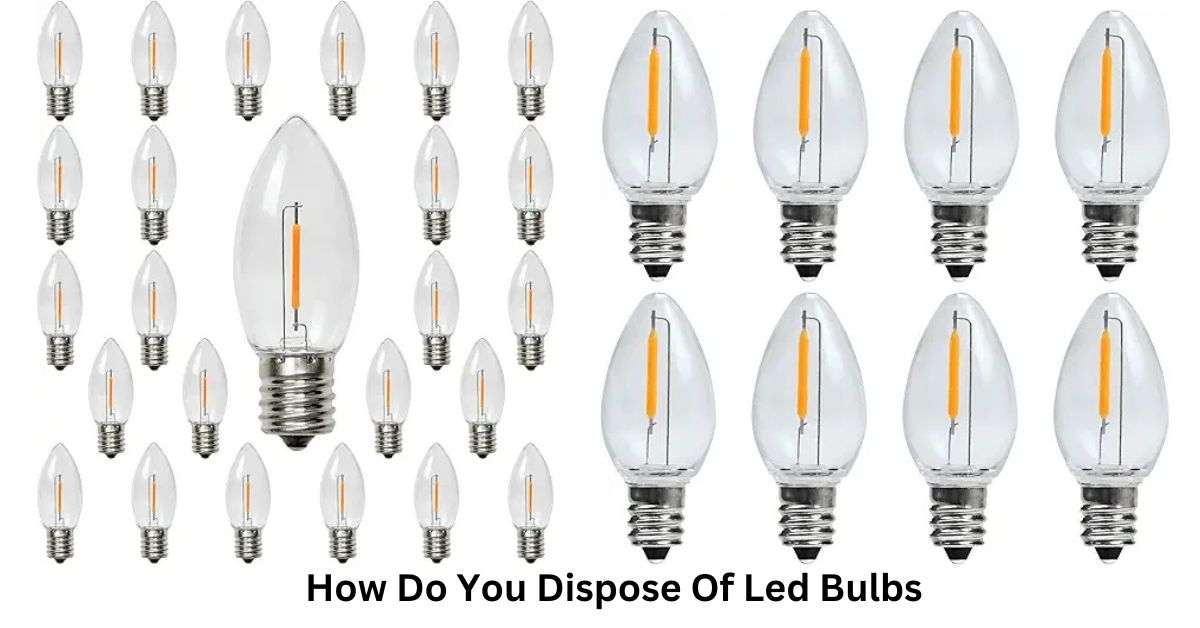Did you know that LED bulbs can last up to 25 years? While their longevity makes them a great choice for eco-conscious households, many people are unsure about what to do when these bulbs finally burn out. Unlike traditional bulbs, LEDs contain fewer hazardous materials, but proper disposal is still essential to protect our environment. As someone who has spent years researching sustainable lighting practices, I’m here to guide you through the process of safe and responsible LED bulb disposal. Let’s make sure your old bulbs end up in the right place!
Understanding LED Bulb Composition
LED light bulbs are a modern marvel, but what makes them different from traditional bulbs?
- Breakdown of LED Bulb Components
LED bulbs contain circuit boards, small electronic parts, and a sturdy housing. These components are far less toxic than the mercury-filled CFL bulbs but are still classified as electronic waste. - Comparison with Other Bulb Types: Unlike CFLs or incandescent bulbs, LEDs are mercury-free and energy-efficient. This means their environmental impact is lower, but they still require proper disposal.
- Why Proper Disposal Matters: Dumping LEDs into regular trash contributes to growing landfills and prevents the recovery of valuable materials. Recycling lessens environmental damage and aids in resource conservation.
- Recyclable Materials in LED Bulbs: Materials like aluminum, glass, and small electronic components can often be reclaimed and reused through proper electronic waste recycling.
How Do You Dispose Of Led Bulbs
Before you dispose of your LED bulbs, you need to handle them correctly to ensure safety for yourself and the environment.
- Steps to Remove Bulbs Safely: Always turn off the power before removing a bulb. Gently unscrew it without applying too much pressure to avoid breakage.
- What to Do If an LED Bulb Breaks: If a bulb breaks, wear gloves to pick up the pieces. Use a damp cloth to clean up smaller fragments and avoid using a vacuum, as it may spread debris.
- Proper Storage Before Disposal: Store used bulbs in a sturdy container to prevent damage until you can take them for recycling.
- Safety Equipment Needed: Generally, LED bulbs don’t require special safety equipment, but gloves and a storage box can protect against accidental cuts or contamination.
LED Bulb Recycling Options
Thankfully, there are several ways to recycle LED bulbs responsibly.
- Local Recycling Centers: Many cities have recycling facilities that accept LED bulbs as part of their electronic waste collection programs.
- Hardware Store Take-Back Programs: Some hardware stores offer recycling programs where you can drop off old LED bulbs. For availability, check with your neighborhood shop.
- Mail-In Recycling Services: If you don’t have local options, many companies provide mail-in services for lighting waste management.
- Municipal Waste Management Guidelines: Consult your local waste management department to learn about rules for disposing of household hazardous waste, including LED bulbs.

Environmental Impact of LED Disposal
Recycling LED bulbs isn’t just about following rules—it’s about making a real difference.
- Benefits of Proper LED Recycling: Recycling reduces landfill waste, conserves raw materials, and supports sustainable lighting practices.
- Consequences of Improper Disposal: Throwing LED bulbs in regular trash can lead to lost recyclable materials and increased landfill pollution.
- Energy Savings from LED Usage: LEDs consume significantly less energy, making them an eco-friendly choice from installation to disposal.
- Carbon Footprint Reduction Through Recycling: Proper disposal minimizes greenhouse gas emissions associated with producing new materials.
Common LED Disposal Mistakes to Avoid
Here are some mistakes to watch out for when disposing of LED bulbs:
- Why LEDs Shouldn’t Go in Regular Trash: LED bulbs are classified as electronic waste, so they don’t belong in your household trash.
- Mixing Different Types of Bulbs: Keep LEDs separate from other bulbs like CFLs, which require different handling due to mercury content.
- Incorrect Packaging Methods: Always package used bulbs securely to prevent breakage during transport.
- Transportation Safety Concerns: Ensure your bulbs are in a sturdy container before taking them to a recycling facility.

Special Considerations for Commercial LED Disposal
Businesses often deal with larger quantities of LED bulbs. Here’s what they need to know:
- Bulk Disposal Guidelines: For large-scale replacements, companies should work with specialized lighting waste solutions providers.
- Business Recycling Programs: Many cities offer commercial recycling programs tailored for businesses.
- Documentation Requirements: Businesses may need to document their electronic waste disposal activities to comply with regulations.
- Cost Considerations: While recycling may have upfront costs, it often reduces long-term waste management expenses.
Conclusion
Properly disposing of LED bulbs doesn’t have to be complicated! By following these guidelines, you’re not only protecting the environment but also promoting sustainable disposal methods. Check with your local recycling center for specific requirements, and consider setting up a designated storage area for used bulbs until you’re ready to recycle them. Together, we can make eco-friendly choices from purchase to disposal.
Related articles:
Hi, I’m Malik Suhail—an SEO expert, web designer, and passionate blogger with 2 years of experience. I specialize in crafting content that is not only informative but also tailored to meet the needs of my readers.
I write about diverse topics, always striving to simplify complex ideas and provide valuable insights that resonate with my audience. Whether it’s about SEO strategies, web design trends, or blogging tips, I am committed to delivering well-researched, practical, and easy-to-understand information.
My mission is to help readers navigate the digital world with confidence and clarity. I believe in adding value through authentic content that inspires action and delivers results.


